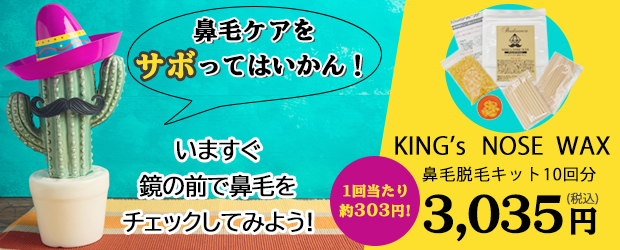Indicators such as MACD, RSI, and Bollinger Bands are highly effective on 5-minute charts. These tools help traders identify trends, overbought or oversold conditions, and potential breakout points, enhancing decision-making for short-term trades. The success of a 5-minute chart trading strategy hinges on several fundamental elements. Understanding these components can help traders maximize their trading potential and manage risks effectively. HowToTrade.com takes no responsibility for loss incurred as a result of the content provided inside our Trading Academy. By signing up as a member you acknowledge that we are not providing financial advice and that you are making the decision on the trades you place in the markets.
The Bearish Falling Three is the opposite of the Bullish Rising Three. It indicates a brief consolidation in a downtrend, followed by a continuation of the downward movement. This is for informational purposes only as StocksToTrade is not registered as a securities broker-dealer or an investment adviser. Before you even think about becoming profitable, you’ll need to build a solid foundation. That’s what I help my students do every day — scanning the market, outlining trading plans, and answering any questions that come up. One of the best options, as shown below, is to use trend, volume, and oscillators.
もくじ
Bearish Harami Cross Identification
The selling intensifies into the candle close as almost every buyer from the prior close is now holding losses. The bearish engulfing candle is reversal candle when it forms on uptrends as it triggers more sellers the next day and so forth as the trend starts to reverse into a breakdown. The short-sell trigger forms when the next candlestick exceeds the low of the bullish engulfing candlestick.
Similarly, the falling wedge forms as price action gets confined within a downward-sloping trend channel. Just like its rising counterpart, the trend channel is made of converging trendlines. In both cases, these converging trendlines signify weakening trends, potentially leading to a reversal.
Key Takeaways
The Japanese candlestick chart patterns are the most popular way of reading trading charts. Our understanding of chart patterns has come along way since the initial 1932 work of Richard Schabacker in ‘Technical Analysis and Stock Market Profits’. Many traders download examples of short-term price patterns but overlook the underlying primary trend, do not make this mistake. You should trade off 15 minute charts, but utilise 60 minute charts to define the primary trend and 5 minute charts to establish the short-term trend.
High-Probability Pattern Analysis
A bullish engulfing candlestick is a large bodied green candle that completely engulfs the full range of the preceding red candle. The doji is a reversal pattern that can be either bullish or bearish depending on the context of the preceding candles. The candle has the same (or close to) open and closing price with long shadows. A doji is a sign of indecision but also a proverbial line in the sand.
It often signals a trend reversal, typically appearing at market tops and bottoms. Getting started in trading involves understanding basic charting methods, of which candlestick charts are a fundamental part. These charts offer a wealth of information that can help you make informed trading decisions. Dive deeper into the powerful Doji family of candlestick patterns and learn how to trade these key indecision signals. Mastering candlestick patterns is a journey that can significantly enhance your trading results, but it requires both knowledge and practical experience. Throughout this guide, we’ve covered the essential patterns that have consistently proven their value across different markets and timeframes.
Signals indecision in the market, and when appearing after extended trends, often warns of potential reversals. Before we dive into specific patterns, it’s crucial to understand how candlestick patterns are classified. This framework will help you categorize any pattern you encounter in the markets.
What Role Do Candlestick Patterns Play in Predicting Market Movements?
Schedule a free 30-minute consultation to discuss your trading and learn more about IU. Use our free scanner to identify stocks making big moves every day. It is characterized by a series of higher highs and higher lows and lower lows and lower highs. These are the best market conditions since you can buy low and sell high.
This tells candlestick patterns for day trading you the last frantic buyers have entered trading just as those that have turned a profit have off-loaded their positions. Short-sellers then usually force the price down to the close of the candle either near or below the open. Panic often kicks in at this point as those late arrivals swiftly exit their positions. Used correctly trading patterns can add a powerful tool to your arsenal.
- Short-sellers then usually force the price down to the close of the candle either near or below the open.
- Whether trading Bitcoin, Ethereum, or small cap gems – when sellers dominate for days on end, the party is likely not over.
- It is followed by a small-bodied candle that signals market indecision.
- Signals indecision in the market, and when appearing after extended trends, often warns of potential reversals.
Long triggers form above the body or candlestick high with a trail stop under the low of the doji. Yes, candlestick analysis can be effective if you follow the rules and wait for confirmation, usually in the next day’s candle. Traders around the world, especially in Asia, utilize candlestick analysis as a primary means of determining overall market direction, not where prices will be in two to four hours.
I’ve found these particularly useful for entering trending markets after brief consolidations. The Hammer pattern is one of my personal favorites because it shows a clear rejection of lower prices. The long lower wick indicates that sellers initially pushed prices down, but buyers stepped in with enough force to push prices back up by the close – a powerful signal of potential reversal. The Bearish Engulfing pattern is the opposite of its bullish counterpart and signals potential downside reversals after uptrends. Reversal patterns indicate potential trend changes and can provide excellent trading opportunities when identified correctly.
Morning star
It signifies a peak or slowdown of price movement, and is a sign of an impending market downturn. The lower the second candle goes, the more significant the trend reversal is likely to be. The best trading patterns to utilize will depend on the current market conditions so make sure to remain flexible, focusing on high probability setups with defined risk/reward ratios. For active traders looking to capitalize on short-term opportunities, pattern-based strategies can provide structure. You should consider whether you understand how CFDs work and whether you can afford to take the high risk of losing your money.
- If the symmetrical triangle pattern appears in a bullish trend, we will likely see a breakout to the upside and a continuation of the bullish trend.
- But there are a few major types of bullish candlestick formations that serve as reliable indicators for traders.
- After a rally up, this reversal pattern forms with a long green day followed by a red candle that gaps up and closes below the midpoint of the green candle.
- Understanding the significance of color is crucial for quick visual analysis.
The head and shoulders reversal pattern has a central peak (head) flanked by two smaller peaks (shoulders) with a neckline connecting the bottoms of the troughs. A breakdown below the neckline signals the trend may reverse at the right shoulder. In no time, you’ll be scanning those candlesticks like a pro looking for your next profitable trade. The patterns are there waiting for you – you just need to know what to look for. If reading intraday trading chart patterns still makes your head spin, don’t worry – I’m going to break it down step-by-step with this patterns cheat sheet.
When looking at a candle, it’s best viewed as a contest between buyers and sellers. A light candle (green or white are typical default colors) means the buyers have won the day, while a dark candle (red or black) means the sellers have dominated. But what happens between the open and the close, and the battle between buyers and sellers, is what makes candlesticks so attractive as a charting tool. In this, you need to spot a chart with several consecutive bearish bars (in this case, we identified a chart with several red bars). The candlestick pattern is established when a long bearish candle is followed and a smaller bullish candle. Candlestick patterns are unique formations that happen in either a single candle or a number of them.


























